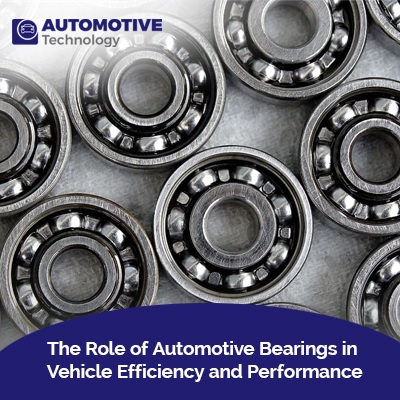Articles
The Role of Automotive Bearings in Vehicle Efficiency and Performance

Introduction
Automotive bearings play a vital yet often overlooked role in the efficiency and performance of modern vehicles. From supporting rotating components to reducing friction and wear, bearings are essential components that contribute significantly to the overall functionality and longevity of a vehicle. In this article, we will delve into the various aspects of automotive bearings, their importance, types, functions, and their impact on vehicle efficiency and performance.
I. Understanding Automotive Bearings
Automotive bearings are mechanical components designed to enable rotational or linear motion while reducing friction and supporting loads. They are commonly used in various vehicle systems, including engines, transmissions, wheels, steering mechanisms, and suspension systems. Bearings are critical for smooth operation, reduced energy consumption, and enhanced durability of automotive components.
II. Types of Automotive Bearings
Ball Bearings: These are the most common type of automotive bearings, consisting of spherical balls enclosed within a ring. They are used in wheel hubs, transmissions, and other rotating components due to their ability to handle radial and axial loads efficiently.
Roller Bearings: Roller bearings use cylindrical or tapered rollers to support loads and reduce friction. They are suitable for high-load applications such as engine crankshafts, transmission gears, and differential assemblies.
Plain Bearings: Also known as sleeve bearings, plain bearings use a sliding surface to support rotating or linear motion. They are commonly used in engine connecting rods, camshafts, and suspension systems.
Thrust Bearings: These bearings are designed to support axial loads and prevent axial movement in one direction. They are often used in transmissions, steering columns, and drivetrain components.
III. Functions of Automotive Bearings
Load Support: Bearings distribute the weight and loads of vehicle components, such as engine crankshafts, wheel hubs, and suspension systems, ensuring smooth and efficient operation.
Friction Reduction: By providing a low-friction interface between moving parts, bearings minimize energy losses and improve overall mechanical efficiency, leading to fuel savings and reduced emissions.
Vibration Damping: Bearings absorb vibrations generated during vehicle operation, enhancing driver comfort, reducing noise levels, and preventing premature wear of components.
Alignment Compensation: Bearings compensate for misalignments and deviations in shafts or components, maintaining proper functioning and prolonging the lifespan of mechanical systems.
IV. Impact on Vehicle Efficiency and Performance
Fuel Efficiency: The use of high-quality bearings with low friction coefficients reduces mechanical losses and improves energy transfer efficiency, contributing to better fuel economy and reduced carbon emissions.
Power Transmission: Efficient bearings ensure optimal power transmission from the engine to the wheels, enhancing acceleration, responsiveness, and overall driving performance.
Durability and Reliability: Properly functioning bearings enhance the durability and reliability of vehicle components, minimizing maintenance requirements and downtime, thereby improving overall vehicle performance and customer satisfaction.
Safety: Bearings play a crucial role in vehicle safety by maintaining stable and predictable operation of steering, braking, and suspension systems, ensuring optimal handling and control under various driving conditions.
Challenges and Innovations
Despite their importance, automotive bearings face challenges such as high operating temperatures, contamination, lubrication issues, and wear. Manufacturers are continuously innovating to overcome these challenges by developing advanced materials, coatings, seals, and lubrication technologies that enhance bearing performance, longevity, and reliability.
Future Trends
The future of automotive bearings is marked by advancements in materials science, digitalization, and sustainability. Lightweight and durable materials like ceramics and composites will become more prevalent, contributing to weight reduction, improved efficiency, and reduced environmental impact. Additionally, the integration of smart sensors and predictive maintenance technologies will enable real-time monitoring and proactive servicing of bearings, optimizing performance and minimizing downtime.
Conclusion
In conclusion, automotive bearings are indispensable components that significantly influence the efficiency, performance, and safety of modern vehicles. Their role in load support, friction reduction, vibration damping, and alignment compensation directly impacts fuel economy, power transmission, durability, and overall driving experience. With ongoing technological advancements and innovations, automotive bearings will continue to evolve, driving advancements in vehicle efficiency, sustainability, and performance in the automotive industry.



